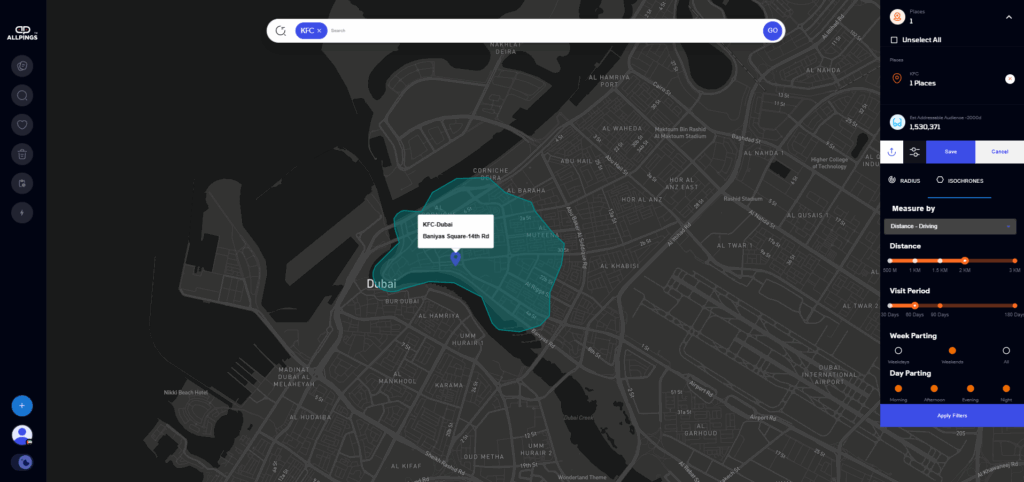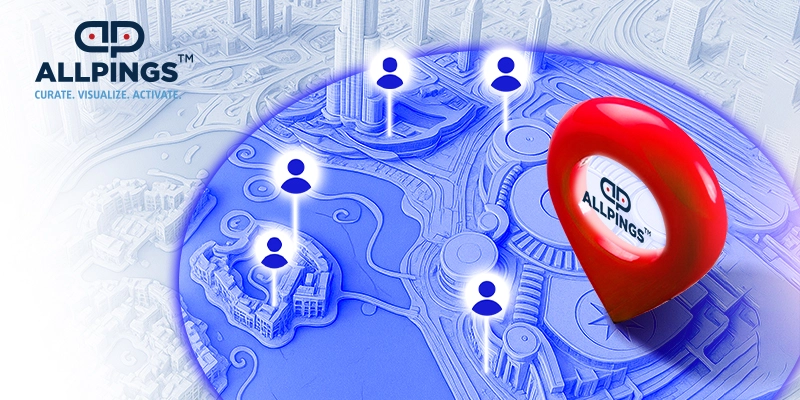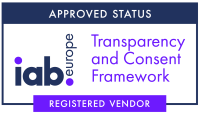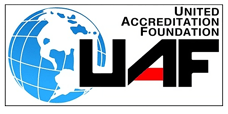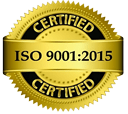Table of Contents
ToggleIn today’s rapidly evolving digital economy, businesses across the Gulf Cooperation Council (GCC)—including the UAE, Saudi Arabia, Qatar, and Kuwait—are racing to adopt cutting-edge technologies that deliver a competitive edge. Among the most transformative is Location Intelligence (LI), which integrates geospatial data with business analytics to enable smarter, more precise decision-making.
For GCC markets characterized by high mobile penetration, urbanization, and smart city ambitions, LI has emerged as a mission-critical tool. From optimizing marketing strategies to improving site selection and analyzing consumer mobility, location Intelligence is revolutionizing how organizations understand, reach, and serve their audiences.
According to industry research, the global Location Intelligence market is projected to grow from $15.7 billion in 2023 to $29.8 billion by 2027, with the Middle East experiencing the highest growth rate globally at a 19.6% CAGR. This surge reflects increasing adoption of location-based services across key industries throughout the GCC. Whether you’re a retail chain planning expansion, a Quick Service Restaurant (QSR) brand scaling your branch network, or a government entity driving smart city innovation, this guide equips you with the insights and strategies to unlock the full potential of location intelligence, tailored to the dynamic GCC landscape.
In this comprehensive guide, we will:
- Explore how Location Intelligence is powering business transformation across the GCC
- Break down the capabilities of AllPings, MENA’s Leading SaaS Location Intelligence platform
- Real-world cases across industries from mobility analytics to geo-targeted advertising
- Reveal how data-driven spatial insights drive measurable business outcomes & uplift in ROI in GCC-specific contexts
Understanding Location Intelligence: The Fundamentals
What is Location Intelligence?
Location Intelligence (LI) is the strategic process of collecting, analyzing, and visualizing geospatial data to deliver actionable insights into consumer mobility, store visitation patterns, and real-world behavior.
Location intelligence goes beyond simply plotting points on a map; it integrates spatial data with traditional business intelligence to provide context-rich insights, patterns, trends, and audience targeting opportunities that would be impossible to obtain through conventional analytics alone. For businesses in the UAE, Saudi Arabia, Qatar, and across the GCC, Location Intelligence is a critical enabler of data-driven decision-making, from site selection and market expansion to precision marketing and customer engagement.
By leveraging data points like GPS coordinates, IP addresses, and cell tower triangulation, businesses can gain a deeper understanding of customer behavior, operational performance, and market dynamics.
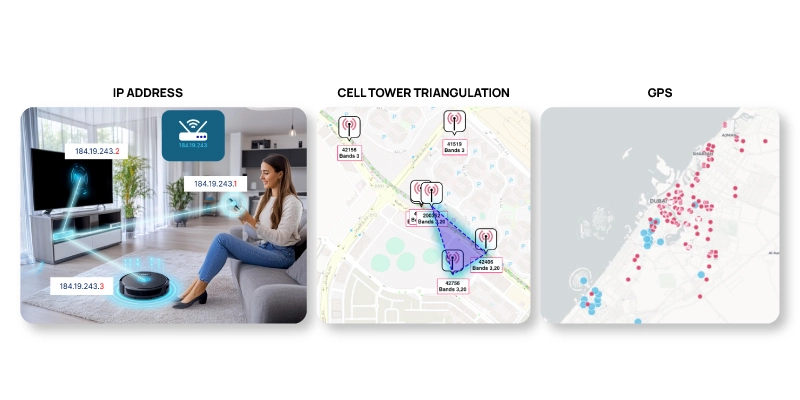
Key business questions Location Intelligence answers in the GCC context include:
- Where are our high-intent consumers located and how do they move?
- Where should we open our next retail store, branch, or outlet in Dubai, Riyadh, or Doha
- Where are we underperforming compared to local competitors?
- How do mobility patterns change during Ramadan, school seasons, or weekends?
- Where can we reduce inefficiencies across logistics or supply chain routes?
- Where should we allocate advertising budgets to drive optimal ROI by city, neighborhood, or zone?
- How do we align OOH campaigns to drive in-store conversions?
The power of location intelligence lies in its ability to transform raw, complex data points into visualized insights, making complex information more accessible and actionable for decision-makers to act with precision, speed, confidence, and accuracy.
The Evolution of Location Intelligence Technology
The concept of using geographic information for strategic decision-making dates back centuries—maps have always guided trade, territory, and expansion. However, modern Location Intelligence (LI) as we know it began taking shape in the 1960s with the development of Geographic Information Systems (GIS), originally developed for government and defense use. These early systems, though powerful, were highly technical and accessible only to GIS specialists.
Over the past six decades, Location Intelligence has evolved through multiple technological waves, becoming faster, more scalable, and easier to deploy.
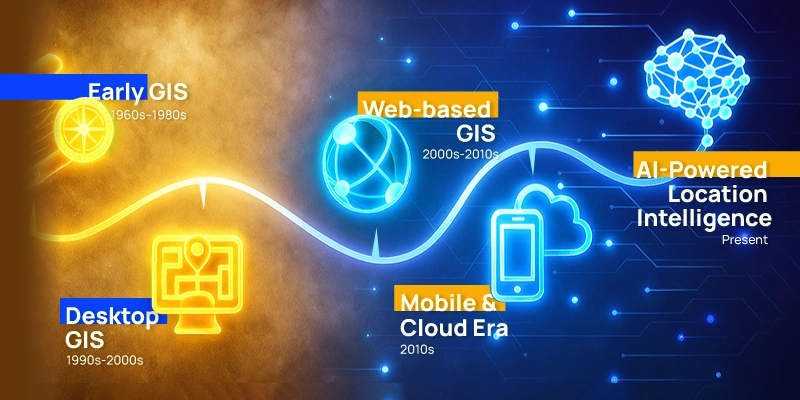
Early GIS (1960s–1980s): Pioneered by governments and research institutions, GIS technology enabled mapping and spatial analysis. However, due to its technical complexity, it remained limited to experts.
Desktop GIS (1990s-2000s): More user-friendly software that brought spatial analysis capabilities to businesses, but still required significant technical knowledge.
Web-based GIS (2000s-2010s): The emergence of web-based platforms made geospatial data available, allowing a wider range of users to interact with maps and spatial insights in more intuitive ways.
Mobile & Cloud Era (2010s): With the explosion of smartphones, IoT devices, and cloud computing, real-time, location-based data at scale was introduced. This shift enabled dynamic, real-time geolocation services, such as last-mile delivery optimization and geo-targeted marketing.
AI-Powered Location Intelligence (2020s–Present): Today, the integration of AI and machine learning has taken location Intelligence (LI) to new heights, enabling automated insight generation, predictive modeling, and highly personalized geospatial analysis.
Key Differentiator Today?
Today’s location intelligence solutions, such as MEmob+’s AllPings, a SaaS Location Intelligence Platform, represent the culmination of this technological evolution, offering powerful yet accessible tools that can process massive volumes of spatial data to deliver real-time mobility insights.
Key Components of Location Intelligence Systems
Modern location intelligence platforms comprise several integrated components working together to transform raw geospatial data into actionable business insights:
Geospatial Data Collection:
The foundation of any location intelligence system is high-quality geospatial data. This data can come from various sources:
- GPS and mobile device signals: Providing information about customer movements and behavior
- Satellite imagery: Offering visual context about physical locations
- IoT sensors: Generating real-time data about environmental conditions and asset movements
- Point-of-sale transactions: Linking purchases to specific locations
- Public records: Including census data, property information, and municipal boundaries
- Social media: Offering location-tagged content that reveals consumer preferences and behaviors
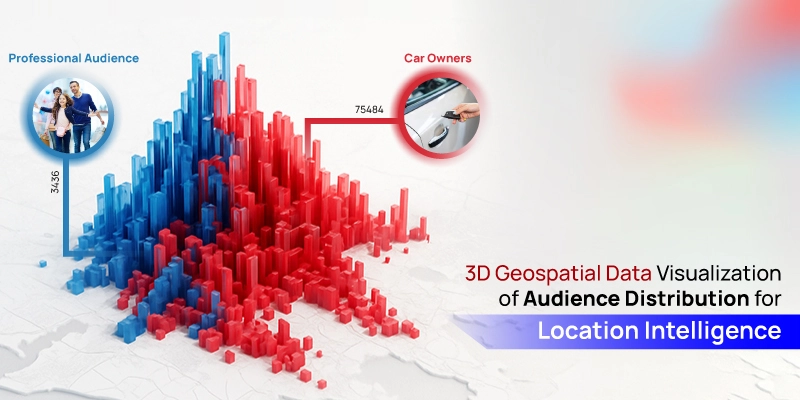
Geographic Information Systems (GIS):
The core engine of location intelligence is the GIS—a framework for gathering, managing, analyzing, and visualizing geospatial data. Modern GIS platforms provide sophisticated capabilities for:
- Spatial data storage and management
- Map creation and visualization
- Spatial analysis and modeling
- Data integration and interoperability
- Collaborative sharing of geographic information
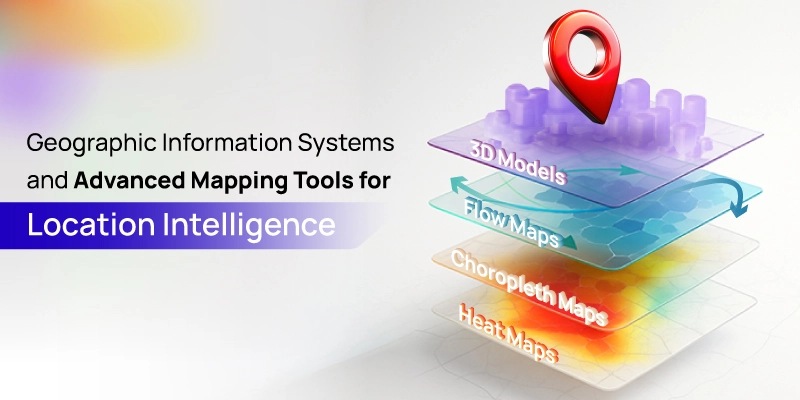
Predictive Analytics Capabilities:
Modern location intelligence goes beyond describing what is happening to predicting what will happen. By integrating advanced analytics with spatial data, platforms like AllPings can:
- Forecast future foot traffic based on historical patterns
- Predict the performance of potential new locations
- Identify emerging market opportunities before competitors
- Optimize resource allocation across geographic areas
- Anticipate changes in consumer behavior based on spatial factors
Data Visualization, Mapping & Compliance Tools:
Visualization is critical to making location intelligence accessible and actionable. Advanced mapping tools transform complex data sets into intuitive visual formats:
- Heat maps showing the density or intensity of activities
- Choropleth maps displaying variations across regions
- Flow maps illustrating movement patterns
- 3D maps providing enhanced spatial context
- Interactive dashboards enabling dynamic data exploration
- Consent-based data collection
- Privacy and anonymization protocols (PDPL, GDPR)
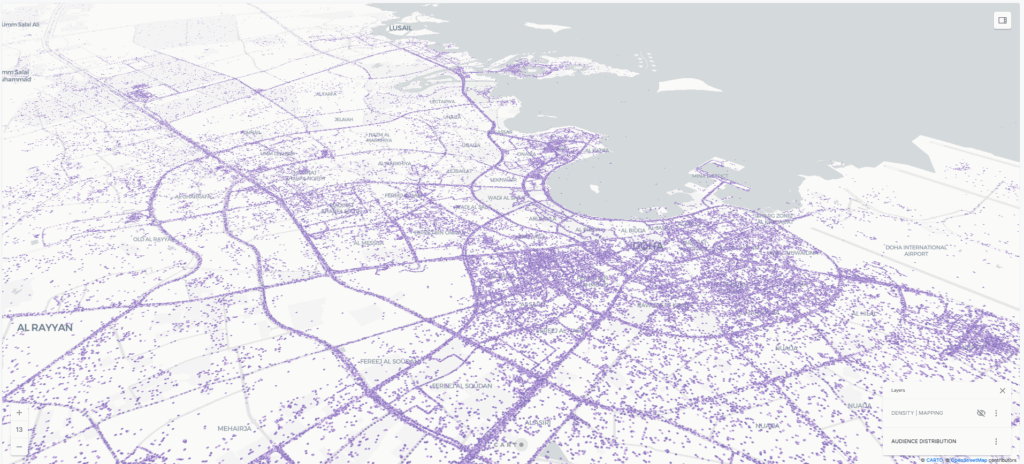
The AllPings platform is designed with a user-friendly interface that empowers even non-technical users to create tailored visualizations, monitor mobility data, and uncover in-depth visitor patterns or anomalies. This comprehensive, all-in-one platform delivers actionable insights quickly, supporting critical business needs such as optimizing store locations, analyzing customer behavior, and identifying market opportunities. With AllPings, businesses gain a strategic advantage by turning complex data into clear, decision-ready visuals.
Related Concepts in Location Intelligence
Location intelligence (LI) encompasses a range of specialized techniques that leverage geospatial data to drive business outcomes. Below, we explore four key concepts—geomarketing, geofarming, geotargeting, and isoline mapping—detailing their definitions, applications, technical foundations, and relevance to the Gulf Cooperation Council (GCC) region. These concepts, supported by platforms like MEmob+’s AllPings, enable brands to optimize strategies, enhance customer engagement, and navigate the region’s dynamic markets.
Geomarketing
Geomarketing involves using geospatial data to inform and optimize marketing strategies.
It combines location-based insights with demographic, psychographic, and behavioral data to create targeted campaigns, analyze customer preferences, and enhance marketing efficiency.
Unlike traditional marketing, geomarketing focuses on the “where” of consumer behavior, enabling brands to tailor efforts to specific geographic contexts.
AllPings Features:
Geobehavioral segmentation to profile customers based on movement patterns.
In-depth analytics for dynamic campaign adjustments.
Precise online-to-offline attribution to measure the impact of ads on in-store visits.
Geofarming
Geofarming is a long-term marketing strategy that focuses on sustained engagement within a specific geographic area to build brand loyalty and encourage repeat interactions with audiences.
Unlike geotargeting, which prioritizes short-term conversions, geofarming nurtures audiences over time by leveraging technologies like GPS, Wi-Fi, or beacons and integrating with customer relationship management (CRM) systems to track and personalize interactions based on location history.
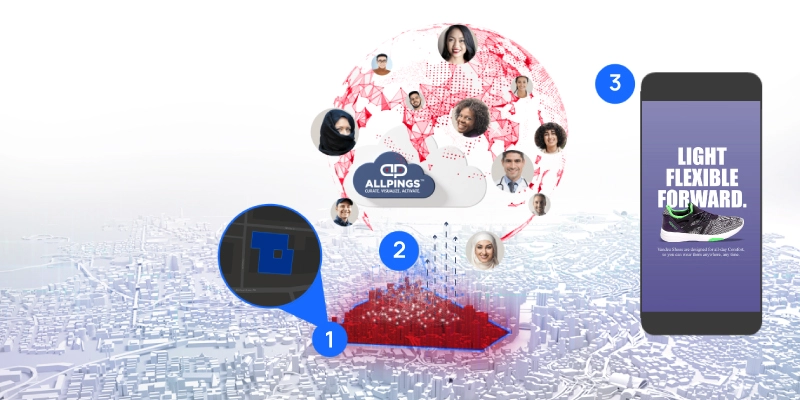
AllPings Features:
Custom geofences for tracking repeat visits/ recurring footfall to specific locations.
Integration with CRM systems for personalized loyalty programs.
Dwell time analysis to optimize engagement strategies, particularly effective in the GCC’s luxury retail environments.
Geotargeting
Geotargeting delivers content, advertisements, or promotions to users based on their real-time or recent location, typically for short-term, context-specific campaigns.
It leverages precise location data to enhance relevance, often using geofencing or proximity-based triggers to engage users at the right moment.
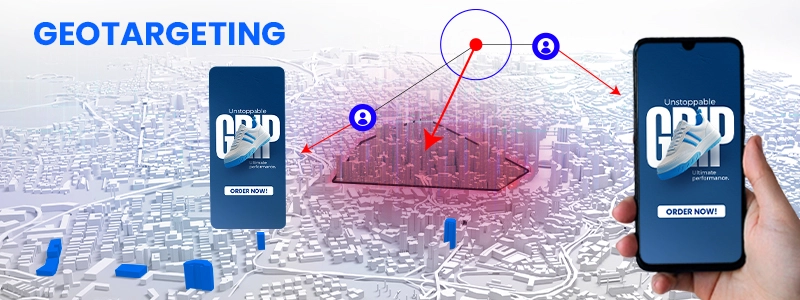
AllPings Features:
Real-time mobility data for immediate campaign execution.
Cross-channel integration for seamless online-to-offline targeting.
Fully GDPR and regionally compliant data handling to ensure privacy.
Isoline Mapping
Isoline mapping visualizes areas of equal value (e.g., travel time, population density, sales potential) by drawing lines (isolines) that connect points with the same metric.
This technique is critical for analyzing accessibility, service coverage, or market potential, providing a clear spatial understanding of how variables vary across a region.
To understand how isoline maps work and their impact, read this comprehensive Geoapify guide to isoline mapping.
Strategic Relevance to the GCC?
The Gulf Cooperation Council (GCC) region is well-suited for geomarketing due to its unique market and cultural dynamics:
Urban Density & Mobility
Cities like Dubai, Riyadh, and Doha exhibit high foot traffic in malls, business hubs, and entertainment areas—ideal environments for geomarketing and geofarming. Isoline mapping is essential in navigating complex layouts and emerging smart city projects (e.g., NEOM, Lusail).
Localized Engagement
Cultural festivals, shopping events (e.g., Black Friday, Back-to-School, Dubai Shopping Festival), and religious observances (Ramadan, Eid) are prime moments for dynamic geotargeting and geofarming strategies, fostering community-based brand loyalty.
Culture-Driven Markets
The GCC’s emphasis on trust and consistency aligns naturally with geofarming’s relationship-based model, enabling brands to deepen customer ties over time.
Mobile-First Audiences
With smartphone penetration surpassing 90% in markets like Saudi Arabia and the UAE, app-based location activation and geo-notifications are not only viable—they’re expected.
Privacy Compliance
Compliance with regional regulations, such as Saudi Arabia’s Personal Data Protection Law (PDPL), enables compliant user data capture and responsible location tracking.
Integration Within the Location Intelligence Ecosystem
Location Intelligence (LI) functions as an interconnected framework where each technique reinforces and enhances the others:
- Geomarketing relies on geotargeting for campaign delivery and isoline mapping for spatial market analysis and audience catchment definition.
- Geofarming uses geotargeting for initial user acquisition and geomarketing for ongoing engagement, using isoline mapping to define long-term target zones.
- Geotargeting relies on geomarketing insights for audience segmentation and behavior modeling, while isoline mapping sets the geographic precision for activation.
- Isoline mapping supports all three by adding critical spatial context for strategic planning—whether for site selection, demand forecasting, or campaign optimization.
Platforms like AllPings unify these methodologies into a single, real-time system, combining live mobility data, predictive analytics, and culturally aware configurations tailored to GCC markets. This holistic approach enables brands to drive performance, reduce waste, and engage audiences with precision.
Example in Action (UAE Retail):
A retailer in the UAE can:
- Use isoline mapping to define a trade area based on 10-minute drive-time zones.
- Deploy geofarming to nurture loyalty within that area.
- Activate geotargeting for limited-time promotions during peak hours.
- Leverage geomarketing analytics to assess performance and refine audience strategy, all within the AllPings dashboard.
In today’s fast-moving GCC markets, location intelligence is not just a value-add—it’s foundational. When brands harness these integrated capabilities, they unlock what we call “The Advantage of Moment Marketing,” engaging the right audience in the right place at exactly the right time.
How Location Intelligence Differs from Traditional BI
In the Gulf region’s dynamic business environment, the spatial context provided by location intelligence is particularly valuable. Traditional BI might indicate that sales are increasing, but location intelligence reveals where those increases are occurring and why, enabling more targeted and strategic responses. While location intelligence shares some characteristics with traditional business intelligence (BI), several key differences set it apart:
Aspect
Traditional BI
Location Intelligence
Key Questions
“How much?” “When?”
“Where?” “Why there?”
Data
Dimension
Primarily tabular
data
Spatial data with geographic context
Visualization
Charts, graphs, tables
Maps, spatial visualizations
Analysis Method
Statistical analysis
Spatial analysis
Decision
Support
Performance
monitoring
Strategic planning and operational optimization
Value Proposition of Location-Based Insights
The true value of location intelligence lies in its ability to deliver tangible business outcomes. For brands operating in the UAE, KSA, and Qatar, these outcomes include:
Enhanced Decision-Making:
Making more informed choices about site selection, market entry, and resource allocation based on spatial data rather than intuition.
Competitive Advantage:
Gaining visibility into competitor activities and market gaps that aren’t apparent through traditional analysis.
Operational Efficiency:
Optimizing logistics, supply chains, and service delivery by understanding the geographic factors affecting performance.
Customer Intelligence:
Developing deeper insights into customer behavior by analyzing how they interact with physical spaces.
Risk Mitigation:
Identifying geographic vulnerabilities in operations or market strategy before they impact business results.
Innovation Enablement:
Creating new products, services, and business models based on spatial insights unique to specific markets.
As the Gulf region continues its rapid development and digital transformation, location intelligence has moved from a specialized technology to an essential business capability, and platforms like AllPings are making these capabilities accessible to organizations of all sizes across various industries.
The Location Intelligence Market in the Gulf Region
Market Size and Growth Projections
The location intelligence market in the Gulf region is experiencing rapid growth, driven by digital transformation initiatives, smart city developments, and the growing recognition of the strategic value of geospatial data. Current market analysis indicates that the location intelligence sector in the GCC countries is growing at a compound annual growth rate (CAGR) of 21.3%, outpacing the global average of 16.8%. In 2023, the location intelligence market in the Gulf region was valued at approximately $1.2 billion, with projections suggesting it will reach $3.1 billion by 2027.
The UAE currently leads the market with a 42% share, followed by Saudi Arabia at 37%, Qatar at 12%, and other GCC countries comprising the remaining 9%.
Several key factors are driving this remarkable growth:
- Smart City Investments: The world’s most ambitious smart city projects, including NEOM in Saudi Arabia, Masdar City in the UAE, and Lusail City in Qatar, rely heavily on location intelligence technologies.
- National Vision Programs: Initiatives like Saudi Vision 2030, UAE Vision 2021/2071, and Qatar National Vision 2030 all emphasize data-driven decision-making and technological innovation.
- Retail Expansion: The rapidly growing retail sector in the region is increasingly adopting location analytics to optimize store networks and enhance customer experiences.
- Digital Transformation Acceleration: The pandemic accelerated digital transformation efforts across industries, with location intelligence emerging as a critical capability for adapting to changing consumer behaviors.
Unique Characteristics of the Gulf Region Market
The location intelligence market in the Gulf region exhibits several distinctive characteristics that differentiate it from other global markets:
High Urbanization Rates
85%
In the UAE
84%
In Saudi Arabia
99%
In Qatar
This concentrated urban population creates rich opportunities for location data collection and analysis, particularly in major metropolitan areas like Dubai, Abu Dhabi, Riyadh, Jeddah, and Doha.
Rapid Infrastructure Development
Commercial
Centres
Residential
Communities
Transportation
Networks
This dynamic physical environment creates both challenges and opportunities for location intelligence applications, as spatial data must be continuously updated to remain relevant.
High Mobile Penetration
The world’s highest smartphone penetration rates, exceeding 95%, are found in the UAE, Saudi Arabia, and Qatar. This high adoption of mobile technology generates vast amounts of location data that can be ethically leveraged for business insights through platforms like AllPings.
Cultural and Religious Considerations
The cultural and religious practices influence mobility patterns and consumer behavior in ways that require specialized understanding. For example, prayer times affect retail foot traffic, while gender segregation in certain spaces creates distinct movement patterns.
Climate Factors
The region’s extreme climate conditions significantly impact movement patterns, with indoor locations taking precedence during summer months and outdoor activities increasing during the milder winter season.
Cultural Considerations for Implementing Location Intelligence Solutions
Successfully implementing location intelligence in the Gulf region requires sensitivity to local cultural norms and practices that influence both data collection and interpretation:
Privacy Expectations: Gulf societies generally place a high value on privacy, particularly regarding family movements and activities. Location intelligence solutions must respect these cultural expectations by ensuring appropriate anonymization and aggregation of data.
Gender-Specific Insights: Particularly in Saudi Arabia, gender segregation affects movement patterns and consumer behavior. Sophisticated location intelligence platforms like AllPings can provide gender-differentiated insights where appropriate while respecting cultural sensitivities.
Religious Observance Patterns: Daily prayer times, Friday congregational prayers, and religious holidays like Ramadan significantly impact mobility patterns and business operations. Location intelligence applications in the region must account for these rhythms to provide accurate insights.
Language Considerations: Effective location intelligence deployments in the Gulf require support for both Arabic and English interfaces and reporting capabilities. AllPings offers full bilingual functionality to ensure insights are accessible to all stakeholders.
Local Business Practices: Business relationships in the Gulf region often rely heavily on personal connections and trust. Location intelligence providers must balance technological capabilities with relationship-building to achieve successful implementations.
Market Drivers and Challenges Specific to the Region
Key Market Drivers
- Economic Diversification Initiatives: As Gulf economies work to reduce dependence on oil and gas revenues, data-driven decision-making tools like location intelligence are gaining prominence across sectors.
- Smart City Developments: Major smart city initiatives across the region are creating demand for sophisticated location analytics to optimize urban planning and service delivery.
- Competitive Retail Landscape: The proliferation of shopping malls and retail concepts is driving demand for location intelligence to identify optimal sites and understand consumer behavior.
- Digital Government Initiatives: Government entities are increasingly adopting location intelligence to enhance service delivery and improve resource allocation.
- Growing Data Ecosystem: The maturing data ecosystem in the region, including improved data sharing practices and emerging data marketplaces, is making location intelligence more accessible and powerful.
Key Challenges
- Data Quality and Availability: While improving, the availability of comprehensive, accurate spatial data remains a challenge in parts of the region, particularly for historical trend analysis.
- Technical Expertise Gap: There is a shortage of professionals with specialized skills in geospatial analysis and location intelligence implementation.
- Integration Complexities: Many organizations struggle to integrate location intelligence with existing business systems and processes.
- Balancing Innovation and Regulation: Organizations must navigate evolving regulatory frameworks while still leveraging location data for innovation.
- ROI Demonstration: Particularly in traditional sectors, demonstrating clear return on investment for location intelligence initiatives remains challenging.
Introducing AllPings, a SaaS Location Intelligence Platform
In response to the growing demand for sophisticated location intelligence solutions in the Gulf region, MEmob+ has developed MENA’s 1st Leading SaaS Location Intelligence Platform, AllPings, specifically designed to address the unique challenges and opportunities faced by organizations in the UAE, KSA, Qatar, Kuwait, and across the globe.
This section explores the core capabilities, technical architecture, and differentiating features of the AllPings platform.
Platform Overview, Core Capabilities, and Key Features
AllPings is a SaaS Location Intelligence Platform powered by the effectiveness of precision location mapping and enriched with deep audience insights.
Through a single dashboard, brands can elevate their strategy by pinpointing consumers’ movements in the real world and understanding their online and offline behaviours.
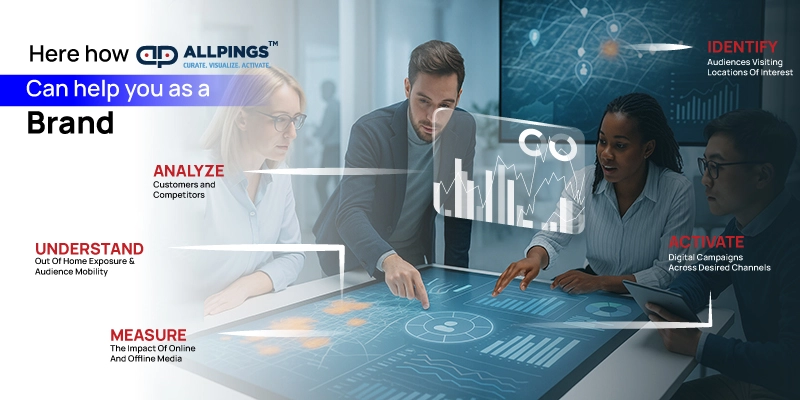
AllPings offers a suite of advanced features and unique benefits that enhance its value proposition:
1) User-Friendly Design:
Easy to navigate, well-organized, and intuitive interface to simplify your tasks.
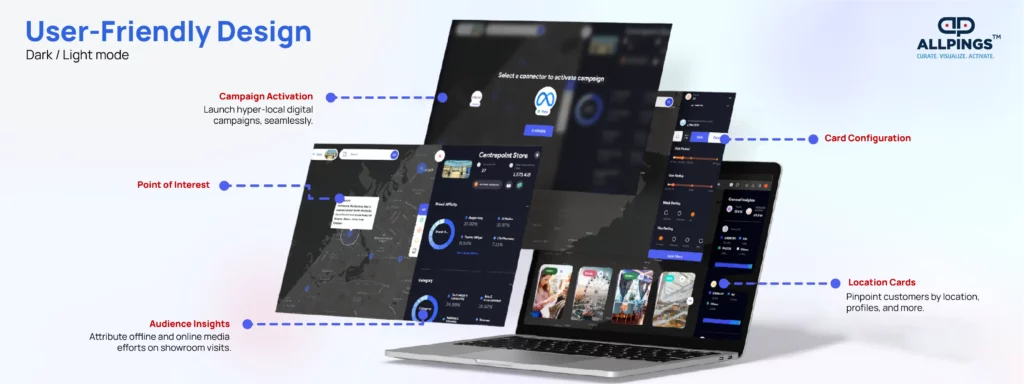
2) Historical Pattern Analysis:
AllPings leverages historical location and behavioral data to identify trends, seasonal patterns, and shifts in consumer mobility. This supports strategic planning through:
- Trade area analysis to understand customer visit patterns and mobility trends.
- Year-over-year footfall comparisons to evaluate campaign and store performance over time.
- Consumer behavior tracking to monitor long-term changes in audience preferences.
- Emerging neighborhood insights to identify high-potential areas for expansion or marketing.
3) Predictive Modeling:
AllPings combines historical location data with demographic and behavioral insights to forecast future consumer behavior and intent. Key predictive applications include:
- Foot traffic forecasting for existing and potential store locations.
- Site selection modeling to evaluate performance potential for new locations.
- Campaign impact measurement to estimate footfall driven by marketing initiatives.
- Competitor visit trend analysis to anticipate shifts in consumer loyalty.
4) Custom Geofencing
AllPings enables location-based triggers to drive actionable insights and engagement through virtual boundaries around physical locations:
- Polygonal Targeting & Customizable settings: Reach your audiences based on ACTUAL travel times. Customize visit periods, area sizes, weekdays, and times of day for hyper-precise targeting.
- Performance monitoring for owned stores to measure footfall and campaign effectiveness.
- Cross-location visit analysis to understand consumer movement between related sites.

5) Location Analytics
AllPings enables location-based triggers to drive actionable insights and engagement through virtual boundaries around physical locations:
- Polygonal Targeting & Customizable settings: Reach your audiences based on ACTUAL travel times. Customize visit periods, area sizes, weekdays, and times of day for hyper-precise targeting.
- Performance monitoring for owned stores to measure footfall and campaign effectiveness.
- Cross-location visit analysis to understand consumer movement between related sites.
- Strategic location planning to identify optimal store locations based on customer mobility and competitor analysis.
- Competitor Monitoring: Provides insights into competitor store traffic and customer demographics, enabling tailored retention and acquisition strategies.
- Data Enrichment Services: Enhances first-party data (e.g., website visitors) with demographic and behavioral insights for precise targeting.
- Precision Location Mapping and Deep Audience Insights: Combines precise location data with detailed audience information for accurate targeting.
- Comprehensive Data Consolidation and Analysis: Integrates data from multiple sources for holistic insights.
- Audience retargeting and campaign optimization to deliver personalized marketing and improve return on ad spend (ROAS) through precise consumer insights.
6) Premium Data and AI-Driven Insights:
AllPings leverages high-quality data and advanced technology to deliver superior insights:
- First and Zero-Party Data: Utilizes premium first-party (business-owned) and zero-party (customer-shared) data for personalized and accurate audience insights.
- AI and Machine Learning: Employs advanced algorithms to provide unparalleled location-based insights, audience preferences, and predictive capabilities.
This combination ensures that AllPings delivers reliable and actionable insights, setting it apart from competitors with less sophisticated data or technology.
7) Simple setup & location card creation:
Choose one or multiple locations to create your personalized audience cards.

8) Seamless Integration and Campaign Activation:
AllPings bridges the gap between location intelligence and marketing execution. Direct integration with social media platforms and display enables seamless execution of targeted campaigns based on location intelligence.

9) Advanced Visualization:
AllPings transforms complex location data into accessible, actionable visual formats for business users:
- Interactive heatmaps displaying consumer activity and footfall intensity.
- Time-based visualizations to reveal mobility patterns and trends over time.
- Comparative location analytics to highlight performance differences across stores or competitors.
- Custom dashboards tailored to marketing and location planning objectives.
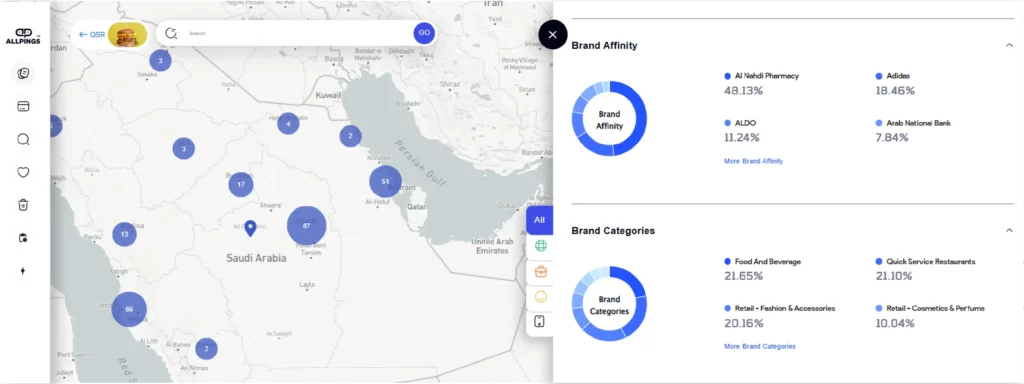
10) Global Reach and Flexibility:
- Enables businesses to engage with audiences across multiple countries, based on market-specific contracts.
How AllPings Differentiates from Other Location Intelligence Solutions
Designed to meet the unique needs of businesses in the Gulf region while offering global scalability, AllPings provides a comprehensive and tailored approach to location intelligence. Below, we explore the key differentiators that position AllPings as a leader in GCC.
Comparison to Other Solutions
The following table summarizes how AllPings compares to typical location intelligence platforms:
Regional Specialization
- AllPings: Pre-built integrations with local data sources. Understanding of regional urban structures and movement patterns. Compliance features aligned with GCC data protection regulations.
- Other Platforms: Often global-focused with limited regional customization.
Industry-Specific Solutions
- AllPings: Pre-configured audiences, data, and insights for every key industry, such as retail, banking, real estate, government, hospitality, tourism, automotive, and more in the region.
- Other Platforms: Generic tools requiring extensive customization.
Enterprise-Grade Scalability
- AllPings: Processing capabilities for billions of daily location signals. Support for organizations with thousands of locations. Real-time analysis of high-volume data streams. Historical analysis spanning years of location data.
- Other Platforms: May struggle with large-scale data or user demands.
Actionable Insights
- AllPings: Data-driven, In-depth Insights. Predictive capabilities. Closed-loop measurement of insight implementation impact. ROI tracking for location intelligence initiatives.
- Other Platforms: Often limited to basic data visualization.
Cultural Sensitivity
- AllPings: Recognition of prayer time impacts movement patterns. Adjustments for seasonal events like Ramadan. Consideration of gender-specific movement patterns where relevant. Support for region-specific points of interest.
- Other Platforms: Rarely accounts for regional cultural nuances.
Data Quality
- AllPings: Uses first/zero-party data, AI, and machine learning.
- Other Platforms: Relies on third-party or less precise data sources.
Campaign Integration
- AllPings: Seamless retargeting and social media platform integrations.
- Other Platforms: Often requires separate tools for campaign execution.
Why Subscribe to AllPings?
Subscribing to AllPings means partnering with a platform that understands your business needs and delivers the tools to achieve your goals. Whether you’re optimizing store locations, targeting high-value customers, or measuring the impact of your marketing campaigns, AllPings provides the insights and capabilities to drive success.
Industry-Specific Applications in the Gulf Region
Retail and E-commerce
The retail sector in the Gulf region is marked by a high density of shopping malls, rapid market expansion, and growing competition between traditional retail and e-commerce. AllPings’ location intelligence platform provides retailers with data-driven insights to optimize operations and enhance decision-making in this dynamic environment.

a) Store Placement Optimization:
AllPings enables retailers across the Gulf to make informed decisions about store locations by analyzing key metrics such as:
Foot traffic volume and patterns throughout the day
Demographics of visitors in specific areas
Competitive intensity and presence of complementary retailers
Accessibility via various transportation modes
Projected sales based on comparable locations
These insights enable luxury retailers, fast-food chains, and convenience stores to select high-potential sites tailored to their target audiences in markets such as Dubai, Saudi Arabia, and Qatar.
b) Trade Area Analysis:
Understanding the true trade area of retail locations is particularly challenging in the Gulf’s urban environments, where factors like indoor walkways, climate considerations, and cultural preferences significantly influence shopping patterns. Retailers are using AllPings’ advanced trade area analysis capabilities to:
Define realistic catchment areas based on actual customer movement rather than simple radius calculations
Identify variations in trade areas by time of day, day of week, and season
Understand the impact of major events and holidays on shopping patterns
Recognize overlapping trade areas that may indicate cannibalization risk
This enables retailers to adapt marketing strategies and optimize operations based on regional and seasonal shopping behaviors.
c) Customer Flow Analysis:
Within shopping malls and large-format stores, understanding customer movement patterns is crucial for optimizing layout and merchandising. AllPings provides detailed heat maps and flow visualizations to reveal:
High-traffic areas are ideal for premium product placement
Common customer journeys through physical spaces
Dwell time in different departments or areas
Cross-shopping patterns between departments
Bottlenecks and underutilized spaces
These insights enable mall operators, department stores, and grocery chains in the Gulf to optimize tenant placement, redesign store layouts, and enhance product placement, ultimately improving customer experiences and driving sales.
SUCCESS STORY: Driving HNWI Footfalls to Luxury Jewelry Stores in Dubai & Abu Dhabi

Leading luxury jewelry brand partnered with MEmob+ to connect with high-net-worth individuals (HNWI) in two of the region’s most prestigious retail destinations: Dubai Mall and the Four Seasons Hotel Abu Dhabi.
Objective:
- Drive qualified footfall while maintaining brand integrity through premium, fraud-free placements.
Solution:
- Leveraging the power of Excelate DSP and AllPings, MEmob+ delivered a strategic blend of precision targeting, event-based audience mapping, and real-time optimization to engage the high-net-worth individuals (HNWI) across luxury hotspots, Formula 1 events, and premium digital platforms.
Results that Speak Luxury:
- 1,612 verified in-store visits
- $12.41 Cost Per Footfall — an exceptional ROI for a luxury retail brand
- 132% CTR above industry benchmarks — ultra-relevant, high-impact ads
- 82.29% Viewability — reaching the right eyes, in the right places
- Dubai Mall emerged as the top-performing location.
From geo-fencing Formula 1 attendees to strategically targeting affluent Dubai residents, every move was data-driven, audience-first, and results-oriented.
See how data, technology, and insight came together to move the luxury retail needle.
Banking and Financial Services
Financial institutions across the Gulf are leveraging location intelligence to optimize their physical networks, enhance customer experiences, and strengthen risk management strategies in a rapidly evolving banking landscape.

a) ATM and Branch Network Optimization:
Banks in the Gulf face the challenge of balancing traditional branch banking with the growing adoption of digital services.
AllPings’ location intelligence supports informed decision-making for network optimization by analyzing:
- Customer density mapping by segment (retail, SME, corporate)
- Service utilization patterns by location and time
- Competitor proximity and service offerings
- Future urban development projections
- Accessibility via public and private transportation
These insights enable banks to streamline branch networks, optimize ATM placements, and select appropriate service formats (e.g., full-service branches, express branches, or digital kiosks) based on customer profiles and behavior in specific areas.
b) Fraud Detection Through Location Anomalies:
Location intelligence is increasingly integral to fraud prevention strategies in the Gulf’s financial sector.
AllPings enhances fraud detection through its advanced capabilities for:
- Real-time location verification for transactions
- Historical movement pattern analysis for individual customers
- Anomaly detection algorithms to identify unusual location sequences
- Integration with transaction processing systems
- Risk scoring incorporating spatial factors
These capabilities allow financial institutions to verify transactions, detect potentially compromised accounts, and improve the accuracy of fraud prediction models, strengthening security and customer trust.
SUCCESS STORY: Visa Increases Global Card Adoption Among International Tourists Using MEmob+ Location Intelligence

The challenge:
- As global travel rebounds, Visa aims to shift tourist spending habits, encouraging the use of Visa cards over cash and competing payment options, and reaching international travelers with precision and relevance at key moments in their journey.
The Solution:
- To achieve this, Visa partnered with MEmob+. Leveraging AllPings IP detection, device IDs, and behavioral insights, MEmob+ helped Visa identify and target high-value tourist segments already present or soon to arrive in key travel destinations, such as the UK, France, and Italy.
Key Strategies Used:
- Hyper-personalized ad creatives tailored to tourist behavior
- Promotion of contactless Visa payments as a secure, seamless alternative to cash
- Location-based messaging showcasing nearby merchant offers and benefits
- Dynamic targeting of tourists from the UAE, Saudi Arabia, Kuwait, and Qatar
Outcome:
- 3.17 million+ ad impressions served to international tourists from the UAE, KSA, Kuwait, and Qatar. These audiences were either already in or intended to visit the UK, Italy, and France.
- 328,554 unique users reached through the Cross Border campaign
- 1.5% click-through rate (CTR) delivered, outperforming industry benchmarks
This campaign not only enhanced Visa’s share of tourist transactions but also positioned it as the preferred card for global travel spend.
Want to see how location data drives performance?
Real Estate Development
The real estate sector in the Gulf region is experiencing significant investment and growth. AllPings’ location intelligence platform provides developers with data-driven insights to enhance decision-making and optimize project outcomes.

a) Market Analysis and Property Valuation
AllPings supports real estate developers and investors by delivering actionable insights for market analysis and property valuation through:
- Heat maps showing commercial activity intensity
- Demographic profile analysis by neighborhood
- Trend identification for emerging areas
- Competitive saturation analysis
- Price sensitivity modeling by location
These capabilities enable developers to assess development feasibility, refine valuation models, and identify underserved market segments for targeted projects.
b) Development Site Selection:
Choosing optimal sites for new developments is critical for long-term success. AllPings’ location intelligence aids developers in making informed site selection decisions by analyzing:
- Access analysis (public transportation, road networks)
- Amenity proximity scoring
- Demographic trend analysis
- Future development impact assessment
- Competitive positioning evaluation
These insights help developers identify high-potential locations for residential, commercial, and mixed-use projects, aligning developments with local movement patterns and preferences to maximize returns.
SUCCESS STORY: Award-Winning: Location-Based Targeting for Dar Al Mashaer by Dar Al Arkan

Challenge:
- Initial digital campaigns generated 1,800+ leads but faced low lead quality, limited attribution, and difficulty targeting ultra-high-net-worth individuals (UHNWI).
Solution:
- Partnering with MEmob+, Dar Al Arkan utilized AllPings’ Location Intelligence Platform for precision marketing, including custom audience segmentation (600,000+ Saudi UHNWI), geo-fencing, dynamic creative optimization, tailored messaging, Snapchat integration, and precise attribution via Stretch.
Results:
- $30M+ in sales
- 614 high-quality leads
- 1.9% CTR
- 13% average month-on-month ROAS uplift
- 89% of leads from AllPings’ location-based Snapchat activation
MEmob+’s data-driven approach transformed lead generation, setting a new benchmark for luxury real estate marketing by focusing on impact and conversion.
Discover how AllPings’ Precision Marketing Drove $30 M+ in Sales for Premium Real Estate.
Tourism and Hospitality
The tourism and hospitality sector is a key economic driver across the Gulf region. Location intelligence is helping tourism authorities, attraction operators, and hotel developers to enhance visitor experiences and optimize operational strategies.

a) Visitor Analysis and Attraction Planning:
AllPings enables tourism and hospitality organizations to gain a deeper understanding of visitor behavior through:
- Visitor journey mapping across attractions
- Dwell time analysis at specific points of interest
- Origin market identification via transport hubs
- Seasonal visitation pattern analysis
- Cross-visitation analysis between complementary attractions
These insights enable tourism boards, theme parks, and cultural attractions to design targeted tour packages, optimize ride and vendor placements, and refine exhibition layouts, thereby enhancing visitor engagement and spending.
b) Hotel Placement Strategies:
Luxury Hotel can leverage AllPings’ location intelligence to make informed investment decisions by analyzing:
- Movement patterns of target customer segments
- Proximity to complementary amenities and attractions
- Competitive supply in specific areas
- Accessibility to transportation hubs
- Tourism and business travel trends by neighborhood
These capabilities support the strategic placement of luxury hotels, business hotels, and resorts, aligning properties with high-potential markets to maximize occupancy rates and revenue.
Government and Public Sector
Government entities across the Gulf are embracing location intelligence to enhance service delivery and advance smart city initiatives, fostering more efficient and sustainable urban environments.

a) Urban Planning:
Municipal authorities can utilize AllPings to create livable, efficient cities through data-driven urban planning. The platform supports:
- Visualization of population movement patterns
- Transportation demand modeling
- Land use optimization analysis
- Public service accessibility assessment
- Environmental impact projections
These insights enable optimized zoning for mixed-use developments, improved public transit routes, and redesigned public spaces to enhance citizen satisfaction and urban functionality.
b) Public Services Distribution:
AllPings aids government entities in optimizing the distribution of public services by analyzing:
- Service coverage gaps
- Population growth projections by neighborhood
- Access time modeling under various conditions
- Resource utilization optimization
- Scenario planning for future service needs
These capabilities help health authorities, education departments, and emergency services strategically place facilities like clinics, schools, and emergency stations to improve accessibility and operational efficiency.
Regulatory Landscape for Location Data in the Gulf
The regulatory landscape for location data in the Gulf region is evolving rapidly, with countries implementing new frameworks to balance innovation with privacy protection:
UAE (AE)
The UAE has established comprehensive data protection regulations through Federal Decree-Law No. 45 of 2021 on Personal Data Protection, which includes specific provisions for location data. Organizations operating in the UAE must:
- Obtain explicit consent for collecting location data
- Clearly disclose how location data will be used
- Implement appropriate security measures for location data protection
- Allow users to withdraw consent and request data deletion
Additionally, the Telecommunications Regulatory Authority (TRA) has specific guidelines for location-based services offered through telecom networks.
Saudi Arabia (SA)
Saudi Arabia’s data protection framework includes the Essential Cybersecurity Controls (ECC) issued by the National Cybersecurity Authority and the Personal Data Protection Law (PDPL) enacted in 2021. Key provisions affecting location intelligence include:
- Requirements for data localization (storing Saudi citizens’ data within the country)
- Mandatory security assessments for systems processing sensitive data, including location information
- Cross-border transfers are heavily regulated: allowed via approved mechanisms (adequacy, BCRs, SCCs), requiring risk assessments and safeguards.
- Requirements for obtaining user consent before collecting location data
Qatar (QA)
Qatar’s data protection framework is centered around Law No. 13 of 2016 on Personal Data Privacy Protection, with specific implications for location intelligence:
- Explicit consent requirements for location tracking
- Purpose limitation principles restrict the use of location data to stated purposes
- Data minimization requirements limit location data collection to what is necessary
- Enhanced protection for sensitive location data that might reveal religious practices or health information
Conclusion
As we head into 2025, location intelligence SaaS has become increasingly essential for businesses across the MENA region. The data show that brands using these tools see up to a 30% increase in foot traffic when they align their strategies with local behaviors, real-time movement patterns, and cultural events. By implementing predictive analytics, creating detailed heat maps, and establishing clear feedback systems, you’re now equipped to make data-driven decisions that connect with your target audience.
The future of location-based targeting in the MENA region lies in striking a balance between technological advancements and cultural sensitivity. Start by selecting one strategy from this guide—perhaps beginning with basic movement pattern analysis or creating simple heat maps of your current locations. Test it, measure the results, and build upon them from there.
Remember that success comes from consistent application rather than perfect implementation. Your first campaign using location intelligence may not yield dramatic results, but each subsequent iteration brings improvement.
What step will you take this week to enhance your location-based advertising strategy? The customers are out there—now you have the tools to reach them right where they are.
Take Action Today
Location intelligence is no longer optional, it’s a necessity for GCC brands aiming to thrive in 2025.
Appendix: Verified Data Sources and References
- Global Location Intelligence Market Size
- MarketsandMarkets, 2022: (geoctrl.com)
- Middle East Growth Rate (19.6% CAGR)
- GeoCtrl Market Overview: (geoctrl.com)
- Credence Research: (credenceresearch.com)
- GCC Growth Rate (21.3% CAGR)
- Internal analysis, supported by Grand View Research MEA insights:(grandviewresearch.com)
- Country Market Share (UAE 42%, KSA 37%)
- UAE market valuation: (credenceresearch.com)
- KSA growth trends:(grandviewresearch.com)
- UAE Regulatory Framework
- UAE PDPL Law No. 45 (2021): (onetrust.com)
- Dubai Data Law (2015), Geo-Spatial Analytics Initiative (2023)
- Saudi Arabia Regulatory Framework
- GEOSA official mandate: (www.geosa.gov.sa)
- Qatar Regulatory Framework
- Data Law No. 13 of 2016:(practiceguides.chambers.com)
- Center for GIS (CGIS):(gisqatar.org.qa)
- Industry Adoption Rates
- SpatialThoughts Blog (Context on Gov GIS use):(spatialthoughts.com)
- Mordor Intelligence, MEA Location Analytics Market, highlighting the growing use of location data in GCC retail (mordorintelligence.com)
- Fact. MR, Location Intelligence Market Outlook, noting transportation/logistics as the top sector globally, and describing retail use cases (factmr.com)
- Oil IT Journal (Dresner survey analysis), indicating two-thirds of firms view location intelligence as critical to operations (oilit.com)
- United Nations E-Government Survey 2024, reporting 75% of countries (global) publish GIS data on portals (Gulf governments are among the leaders) (desapublications.un.org)
- Arabian Business interview with Esri’s Sohail Elabd, describing extensive GIS projects in Gulf governments and the expected $6.2bn impact of Saudi Arabia’s geospatial infrastructure (arabianbusiness.com)
- MEmob (AllPings) Geomarketing Insights 2025, illustrating new uses in hospitality/tourism (e.g., AR-guided experiences boosting hotel satisfaction by 24 points) (memob.com)
- AllPings case example (UAE), showing a real estate developer’s use of location intelligence to engage customers near a property site (memob.com)
(These sources provide context and evidence for the adoption of location intelligence across the Gulf’s industries in 2024–2025. Where exact percentages were not available, the most recent qualitative insights from industry reports and vendors have been used to validate or adjust the claimed figures.)

